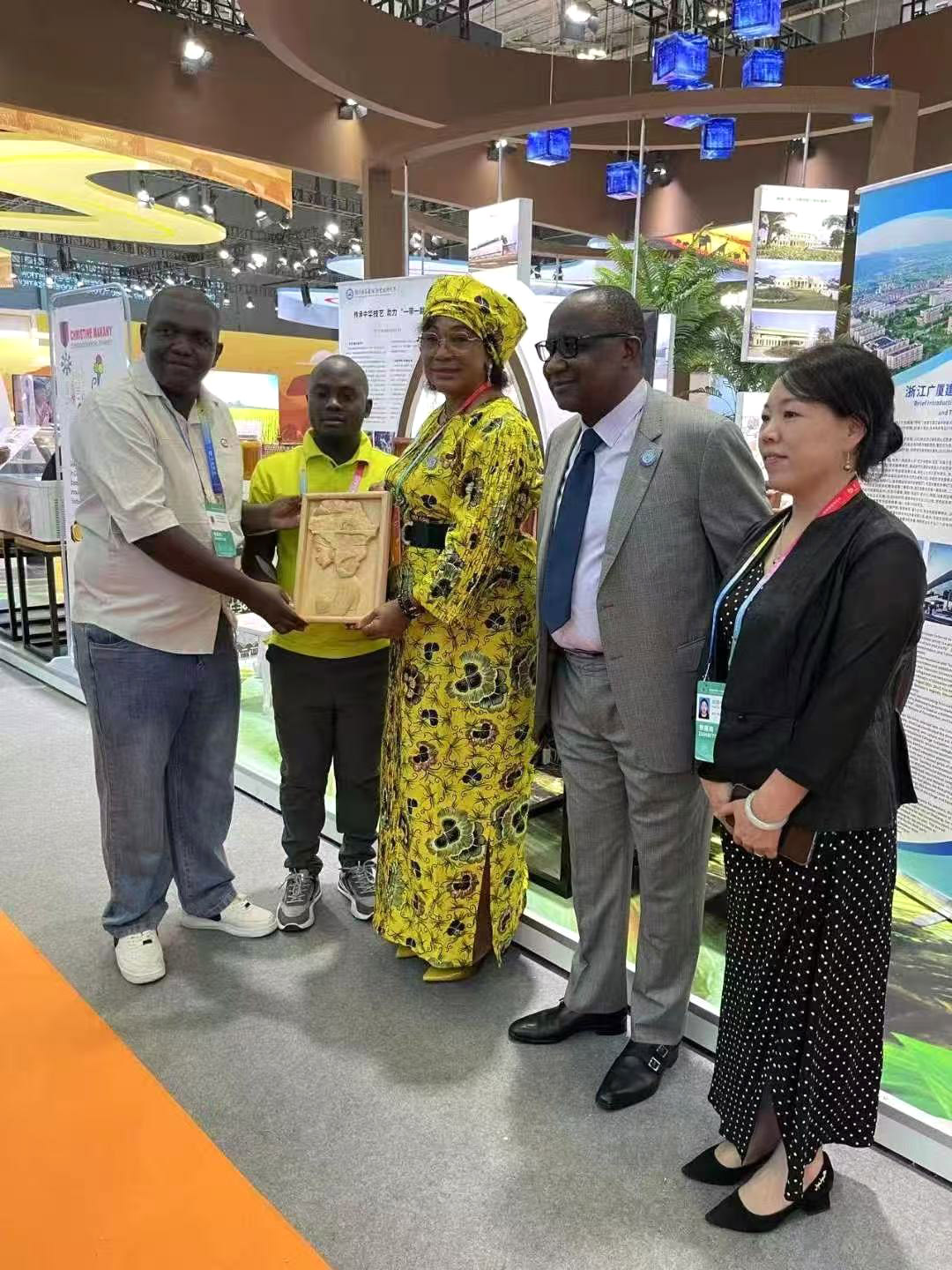Congolese wood artist wins praise for integrating African motifs with Dongyang techniques

At the China-Africa Economic and Trade Expo in Changsha, Hunan province, last month, a group of intricate wooden sculptures blending African cultural motifs with the traditional Dongyang woodcarving techniques of China captivated visitors.
Among the artists behind these remarkable creations was 31-year-old Kaya Boutsoki Davel Grasny — also known as Lu Tianhao — a student from the Republic of the Congo pursuing his artistic dream thousands of miles from home.
"I have long been fascinated by Chinese culture, especially its carving arts," Kaya Boutsoki said. "I came to China to learn from its rich traditions. After graduation, I hope to return home to create my own works, share them with others, and teach woodcarving techniques to more people."
READ MORE: China, Africa pledge to strengthen trade ties
Kaya Boutsoki arrived in China three years ago to study furniture woodcarving at Zhejiang Guangsha Vocational and Technical University of Construction in East China's Zhejiang province.
The university has welcomed students from the African country since 2018 under a program supported by the Belt and Road Initiative, which aims to equip young Africans with practical skills while fostering cross-cultural exchanges.
For Kaya Boutsoki, the marriage of Chinese and Congolese woodcarving traditions holds tremendous promise. "My country has rich forest resources, and wood is an important part of our economy. Carving is also a part of our culture. Chinese woodcarving is so refined and meaningful. Together, they can create something truly unique," he said.
But Kaya Boutsoki's path in China was not without challenges. "At first, I faced two big difficulties: learning Chinese from scratch, and learning to handle carving tools safely. I often injured myself in the beginning," he recalled.
His journey began with building a strong theoretical foundation — getting to know different tools, materials, and basic techniques. "You must understand the fundamentals before you can give shape to your ideas," he said.
Then came the painstaking preparation: assembling and sharpening his tools with great care, embodying the old saying, "To do a good job, one must first sharpen one's tools". This stage tested his patience. "A slip of the hand could mean damaging a viable tool — or worse, getting hurt," he said.
Once his tools were ready, Kaya Boutsoki devoted himself to handson practice. He spent six months working on low-relief carvings in basswood, focusing on design, sketching detailed prints, defining themes and setting the size and style of his pieces.
"It was hard to create depth in flowers or capture the texture of rocks," he admitted. "But through guidance from my teachers and constant experimentation, I gradually overcame these challenges and honed my basic skills."
With stronger fundamentals, Kaya Boutsoki moved on to more complex projects, working on intricate details and artistic expression. After shaping the overall form, he would refine each piece using polishing machines and sandpaper, enhancing precision and beauty in his work.
Kaya Boutsoki's dedication extends beyond the workshop. Some days, he practices up to 13 hours.
His hard work has paid off — he passed level four of the Chinese Proficiency Test and is preparing for level five. "Our teachers always remind us that success comes through effort. That keeps me motivated," he said.
Kaya Boutsoki's talent has also won recognition: he received an excellence award in a university carving competition with a piece depicting the warmth of an African family. Several of his works are now displayed in the university's woodcarving art gallery. His sculptures celebrating China-Africa cultural harmony have earned praise at major exhibitions.
Kaya Boutsoki expressed deep gratitude for the Belt and Road Initiative, which made his journey possible.
"Without it, we wouldn't have had this chance to study in China, make friends, and learn new skills. This means so much to young people in my country — the youth are the future of the nation," he said. Currently, 29 Congolese students study at the university.
ALSO READ: China, Africa see rapid trade growth over past 25 years
At this year's expo, four Congolese ministers visited Kaya Boutsoki's booth. "They praised the cultural integration in the carvings and encouraged us to apply what we've learned to support national development," Kaya Boutsoki said.
He added that the ministers also pledged support for woodcarving businesses back home — a gesture that touched him deeply. "It gave me even more confidence and motivation. I plan to open a woodcarving company in 2026 and help more people learn this craft."
During his time in China, Kaya Boutsoki has explored several regions in Zhejiang, Shanghai and Hunan, gaining a deeper appreciation for Chinese culture. "My friends back home envy me when I tell them about life in China. It's such an open and dynamic country, with advanced technology and a vibrant economy. I always encourage them to come and see it for themselves — to discover a bigger world."
Contact the writer at zhaojia@chinadaily.com.cn


